



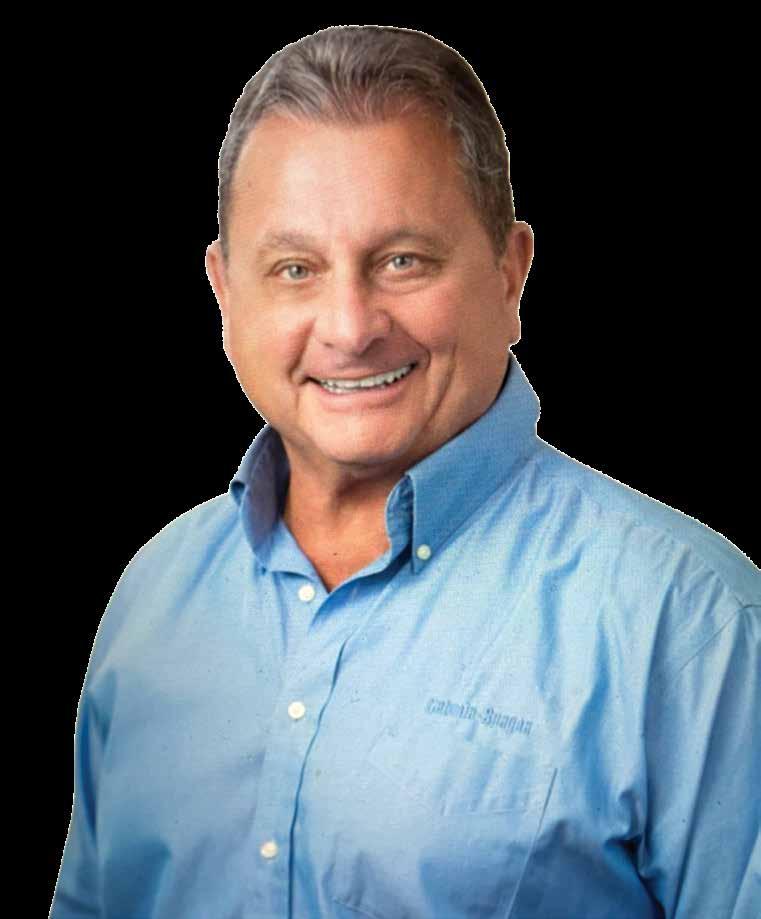








Become an AARP Massachusetts volunteer and make a difference in your community by supporting causes that matter to you, participating in local in-person and virtual events, reaching out to community members, and advocating for change.

Giving back. Making friends. Changing lives. Volunteer opportunities are open to people of all ages. Find your place at aarp.org/volunteerhere

PHOTO: You may upload a photo to the template if (1) it was downloaded from the Digital Asset Hub, or (2) you can document that AARP has all necessary legal rights to use the photo, individuals, artwork and trademarks in text and logo, in this template.
The minimum suggested size for the photos is 4500 x 2700 pixels.

By Jennifer Benson AArP MAssAchusetts stAte Director
Image resolution is best reviewed in “Preview” mode.
AARP Massachusetts offers meaningful volunteer opportunities that allow you to give back and connect with others. Our volunteers are skilled, passionate, and committed to improving the lives of the 50-plus community. Research shows that volunteering enhances well-being, reduces loneliness, and fosters friendships.
For more information about photography and usage rights, please review the Local Photography Guidance & Rules One-Sheet on InfoNet.

Jennifer Benson
Join us on April 1 at Holy Cross in Worcester for our annual volunteer conference. This year’s theme is “Collaborate to Motivate and Inspire!” Whether you’re a current volunteer or eager to get started, this event will highlight ways to get involved in AARP’s mission to educate, empower, and advocate for Massachusetts residents. You can find out more about the event and sign up at www.aarp.org/volunteeringma.
There are any number of ways you can volunteer. There’s a role for everyone at AARP Massachusetts! Here are just a few of our volunteer roles:
• Advocacy – Support legislation on issues like family caregiving, fighting fraud and making Massachusetts even more livable. Volunteers attend hearings, testify, and engage with officials.
• Speakers Bureau – Deliver free presentations on subjects such as Social Security, fraud prevention, and brain health. Non-speakers can assist with marketing and logistics.
• Fraud Watch Network – Help people recognize scams and protect their finances. We know if you can spot a scam, you can stop a scam. As a volunteer, you’ll help teach, give support, and help spread awareness.
• AARP Foundation Tax-Aide – Provide free tax preparation with a focus on low-to-moderate-income individuals 50-plus. AARP Foundation Tax-Aide is the nation’s largest, free, volunteer-run tax preparation and assistance service.
• Literations – Mentor first- to fourth-graders in Boston and Framingham to improve literacy and social-emotional skills.
AARP’s story is based in helping others. It begins back in the 1950s. Retired educator Ethel Percy Andrus found a retired teacher living in a chicken coop. The retired teacher couldn’t afford decent housing or health care. Ethel was committed to serving those around her. She got angry, then got organized. She went on to found AARP, setting in motion a new vision for aging that continues to inspire AARP’s work today.
Dr. Andrus lived her life by the motto, “to serve, not to be served,” which remains AARP’s motto today.
Our volunteers are skilled, dedicated and passionate about giving back to their communities and helping the 50-plus population live their best lives. When you join our inclusive family of volunteers, we’ll provide all of the training and support you need to make a difference, make new connections and have fun at the same time.
REQUIREMENTS FOR UPLOADING QR CODES:
The QR code seen on this template must be deleted or changed. QR codes must be created in the Uniqode platform using your AARP account. Download either .jpg or .png format for use in the template.
Older adults have much to contribute. Whatever causes speak to you, whatever skills, or interests you have, you can find a volunteer opportunity with AARP. It will be fulfilling, and it will make an impact. Whether you volunteer from home or visit the State House, your voice matters. It doesn’t need to be a long-term commitment; every hour helps.
If any of these opportunities interest you, learn more at www.aarp.org/volunteeringma or send us an email at ma@aarp.org.
For information about licenses, training and support, review the QR Code Guidance on InfoNet or contact BrandHelp@aarp.org
Jennifer Benson is the State Director for AARP Massachusetts. For more articles visit www.fiftyplusadvocate.com.
By evAn WAlsh contriButing Writer
SHREWSBURY – “If we’re going to live longer, why not be happier and healthier?”
That question is posed by a Shrewsbury woman whose life has revolved around demystifying aging, supporting seniors, and educating elders. Through her television shows on Shrewsbury Media Connection and Westborough TV, Karen McKenzie has helped people stay “fit for life” and “on the move.”
“Aging is complex, and I want people to delay the time of disability as long as possible — through exercise, through information,” said McKenzie. “It’s very satisfying to know that I’m helping people. When people come up to me, I feel like I’m a movie star.”
Passionate about helping seniors
Originally from the Boston area, McKenzie moved to Shrewsbury in 1966. Always passionate about helping the senior population, she earned a degree from Worcester State University in health science, later receiving a certificate in gerontology. She worked as a Senior Fitness Specialist at The

Willows in Westborough, managing a cutting-edge senior exercise room that was featured in The Boston Globe.
But, outside of her job, she didn’t see many places where seniors could get up-to-date information on how to improve their health and wellness. With a lively personality and a “go-getter” attitude, McKenzie decided to create the content herself. Her
talk show “Seniors on the Move” was first taped at The Willows in 2004.
“I didn’t see anything for seniors. I wanted to get information out for seniors to make more intelligent decisions about their health. We also get into Alzheimer’s, fall prevention. I wanted folks to have health information and to educate themselves. I wanted to show the importance of

Within the building amenities include:
• A Theater-like media center
• Handicap-accessible lounges on every floor
• Library equipped with two computers and free internet access
• Physical fitness center
• Game room with billiard table
• Community room with bingo board and large screen TV
Now accepting applications for 62 years of age and older and those who
and are permanently disabled. Applicants must
movement and staying active,” said McKenzie. “And there’s so much to say, I never run out of ideas.”
200-episode milestone
Since 2004, McKenzie has recorded over 200 episodes of “Seniors on the Move.” During the pandemic, she wanted to give seniors an easy way to get active, so she started “Fit for Life with Karen,” a follow-along exercise program that hit the 200-episode mark in November.
In 1966, McKenzie was diagnosed with Type 1 diabetes, something she’s had to manage throughout her life. But diabetes has hardly stopped her. Between planning and recording her two highly-acclaimed television shows, McKenzie volunteers for the town’s Memory Café and takes part in fall-prevention research.
“Reaching 200 episodes was a real feeling of accomplishment. People come up to me and tell me how much I’ve helped. I’m not doing it so people can see how great I am. Because of my disease, I wanted to live a long, clearer life, and I was just looking for information constantly,” she said.
And, as of now, there are no plans to stop filming.
• Contemporary styled 1 & 2 bedroom apartments
• New kitchens with built-in microwaves and granite-like countertops
• Small pets welcome
• Heat and Hot water included
• Bus route / ample parking
• Beautiful landscaped grounds with gazebo




By nAnce eBert contriButing Writer
AYER – Anthony (Tony) Basile’s family has been in the oil business for well over a century. Just not the type of oil you might think. Basile is CEO of Catania Oils, a fourth-generation family business, which is a leading provider of olive and vegetable oils.
Catania Oils is one of Ayer’s largest employers, with approximately 260 employees in a 75,000-squarefoot facility. Annual revenues were $375 million as of 2022.
Basile attributes the success of the company to his dedicated team of employees as well as his father and grandfather, who founded and then grew the company in the early to mid1900s. The company was launched in the small village of San Pier Niceto in Sicily by Basile’s grandfather, Giuseppe Basile, in 1900. He boarded the ship Italica bound for the United States in 1908 with numerous barrels of olive oil. A terrible storm broke all the barrels, and the oil along with

his other possessions were lost. His grandfather arrived at Ellis Island not speaking a word of English and settled

Catania Oils of Ayer, a fourthgeneration family business, is a leading provider of olive and vegetable oils with retail, food service, private label, and bulk ingredients divisions.
The Catania Oils leadership team includes Tony Basile, center, as CEO, and his sons Joseph Basile, left, as president, and Stephen Basile, right, as executive vice president.

in Massachusetts.
“My grandfather had hoped to start his new business in America and ended up settling on Fulton Street in the North End,” explained Basile. “And then he went on to rent a space on Hanover Street where he had a couple of barrels of olive oil and a hand pump. He also went house-to-house to sell his product as he didn’t own a car.”
Basile’s dad, Joseph, got very involved in the business as a teenager and in 1941, when his grandfather passed away unexpectedly, he and his two brothers, Carmen and Frank were also involved but there were many disagreements.
“After serving in the Army during World War II, my dad came back but the business was non-existent. It was
a difficult situation as some of the family members did not get along,” Basile noted. “In 1946, four partners merged but the partnership didn’t last more than six months. The partners went their separate ways.”
Involved at an early age
Basile and his brothers got involved with Catania Oils at a very early age. They would hold various jobs like emptying the barrels or even cleaning toilets. They would work on the weekends and on snow days in the winter when the schools were closed. As the boys got older, they learned how to pack the oil, which at that time, was done by hand. Now everything is automated.
“If we packed four to five hundred cases, this was a great day. Now it takes about 45 minutes to accomplish


A reverse mortgage gives qualified borrowers, 62 years old or older, the option to receive cash as a lump sum, a monthly check for life, and/or a line of credit that grows every month with NO required monthly principal & interest mortgage payments. All guaranteed by the federal government. You are, of course, responsible for your real estate taxes, insurance, and meeting other loan guidelines.
I promised my dad I would continue to grow the business, and I kept my promise.
the same thing,” said Basile.
When Basile was in high school, he and his brothers became fully involved in the business. By the early 1970s, Basile had a voice in helping to make decisions for the company. The family began to strategize what direction they wanted the business to go in, what territories they would cover and more.
“In the 1980s, after seeing our dedication to the company my dad gifted stock in the business to the five of us; my two sisters, me and my two brothers,” Basile recalled. “In 1988 I became the president of Catania Oils. We realized we had outgrown our space in Somerville, where we had moved from Boston, and moved to our current distribution center and main offices located in Ayer in 1994.”
A leading provider
Catania Oils is a leading provider of conventional, non-GMO Project verified and organic oils to the ingredients, food service and retail markets. They do a lot of private labels for supermarkets and many recognizable companies like Ken’s Salad Dressing, Gordon’s Seafood, Jersey Mike’s and others use their vegetable and olive oil to create their products.
“We are constantly focused on putting profits back into the business,” said Basile. “We have put millions of dollars back in to add tanks, equipment and more. Your vision gets bigger and bigger, but I have stepped
back a bit to allow my two sons, Joseph (president) and Stephen (executive vice president) to get even more involved,” he noted. “We do a lot for our 260 employees who we are grateful to be surrounded by. They are so knowledgeable and dedicated and we could not do this alone,” Basile explained.
The company also has a philanthropic branch called Catania Cares, which has donated nearly $1.5 million to causes like cancer, education, and athletics. Catania Cares has also donated 18,000 pounds of food and over 400 hours of volunteer service.
One of Basile’s most gratifying memories was in 2003 when a second addition had just been completed in the Ayer facility. There was an open house with business associates, friends and family members. His father was sitting and staring out at this event, and he said, “Never in my wildest dreams did I ever think I would see something like this.”
“I promised my dad I would continue to grow the business, and I kept my promise,” Basile observed. “Sadly, he passed away a couple of months after that event, but I still hold that memory dearly. Nothing matches that.”
A hundred and twenty-five years after Giuseppe Basile started his modest olive oil business in a small Sicilian village, the fourth generation of his family continues to build on his early success and carry the tradition forward.
By not having a monthly mortgage payment, hundreds of thousands of eligible homeowners have utilized a reverse mortgage to:
• Receive tax free monthly cash for life
• Pay off a current mortgage or home equity line
• Payoff credit card debt
• Pay real estate taxes & property insurance
• Complete desired home repairs
• Finalize divorce situations or other legal matters
• Only one spouse needs to be 62 years old
• Gain peace of mind knowing that cash is available if ever needed
• And the list goes on!
NO monthly payment is required
You continue to own your home
Only one person needs to be at least 62 years old Easier to qualify for than a conventional loan You may receive cash when needed There is no cost to learn!
A reverse mortgage might not be the magic wand to solve every life challenge, but it very well could be the next best thing. Take the first step and get informed. I have helped hundreds of people and would enjoy the opportunity of having that conversation with you over the phone or in person.

A great place to start is get your free “How to Use Your Home to Stay at Home” 36-page book. This is the official reverse mortgage consumer booklet approved by the U.S. Department of Housing & Urban Development and published by the National Council on Aging.
To receive your free copy, please call or text me at (781) 724-6221 or email me at av@powhse.com
I am also available to evaluate your specific situation, answer your questions, and calculate how much money is available to you.
Alain Valles was the first designated Certified Reverse Mortgage Professional in New England. He obtained a Master of Science from the M.I.T. Center for Real Estate, an MBA from the Wharton School, and graduated summa cum laude from UMass Amherst. He is the senior reverse mortgage loan officer MLO#7946 at Powerhouse Funding Corp. NMLS #1740551. He can arrange but does not make loans. Alain can be reached directly at (781) 724-6221 or by email at av@powhse.com
By shAron oliver contriButing Writer
BOSTON – During its first 20 years of existence, Anthony’s Pier 4 restaurant attracted out-of-town celebrities and locals, including politicians and was one of a handful of high-end restaurants, competing with nearby icons like Locke-Ober and the Ritz Carlton. In the 1980s, it was one of the highest-grossing and busiest restaurants in the United States.
Loyal customers
One of the first things owner Anthony Athanas did after opening the waterfront eatery in 1963 was host a gala dinner for local cab drivers and eventually funded a scholarship for their families. Cabbies so loved the place and felt welcomed to the point where they would often stop by the kitchen to grab a quick bite to eat. In the early days, customers enjoyed a hearty feast and prices like the 95 cent cocktails, broiled swordfish for $3.50, fillet mignon for $6.25 and lobster dishes for under 5 bucks.
Former customers shared on Facebook memories of their experience at Athony’s Pier 4.

Susan Corlies wrote:
“It was wonderful in the 60s, 70s and 80s. All of the Anthony restaurants were, but Pier 4 had that gorgeous location.”
Colleen Swanson added:
“As a kid, I thought the coolest thing about the place was that a lady brought marinated mushrooms around to all of the tables.”
Anthony’s Pier 4 was known for more than its impressive menu and prime location. It was further enhanced by Athanas’ purchase of a 1927 former Hudson River cruise
ship, the SS Peter Stuyvesant, where a concrete and steel cradle held it in place adjacent to the 500-seat dining room restaurant. Everyone from Alfred Hitchcock, Kurt Russell, Goldie Hawn, Frank Sinatra to Richard Nixon, and Julia Child, a regular, dined at Anthony’s. Photographs of celebrities proudly graced the entrance walls.
Some of the wild and colorful stories involving the restaurant are noteworthy by themselves. Screen goddess Elizabeth Taylor and then-husband
• Manicured walking paths with garden plots
• Ideally located in Natick residential bus route • Pets okay under 20 lbs.
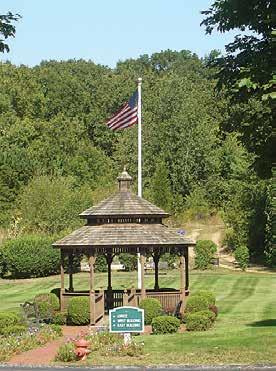
Richard Burton ate there in 1964. The actor was performing at the Shubert Theatre for “Richard Burton’s Hamlet.” Taylor frequented the restaurant and really liked the chairs. As reported by WCVB, according to son Michael Athanas, his father promised to send her twelve of the most worn-in chairs to her home in Switzerland, per her request.
After later divorcing Burton, Taylor lost the chairs and asked Athanas for another twelve. He obliged. This time she was married to Virginia Senator John Warner. Following their divorce in 1982, Taylor visited the restaurant and told Athanas that they divided ownership of the chairs. The senator took six and she kept six. In one national television interview, Taylor could be seen sitting in one of the chairs. After she died in 2011, people would come to the restaurant just to sit in the chairs.
Norman Jewison’s 1968 heist film “The Thomas Crown Affair” shot a scene there for one of its dinner date scenes between Steve McQueen and Faye Dunaway. One headline or at least footnote the historic restaurant could have done without occurred in 1982.



oliver contriButing Writer
BOSTON – Nowadays, there are many things being taken for granted because they are easy to obtain. Ice is one of them. Imagine living during a time when it was somewhat of a hot commodity, refrigeration was not a thought and being an ice cutter was a cash crop for men looking for work.
The most prominent trailblazer of the ice trade was Boston entrepreneur Frederic “Ice King” Tudor. When Tudor was a teen in the 1790s, ice was exclusively reserved for the wealthy who would hire locals to cut ice from lakes with saws and axes. Afterwards, ice would get stored in covered wells and served to chill cocktails and other refreshments during the summer.
Since the state had many lakes and ponds that froze during winter months, Tudor decided to sell ice to residential and commercial customers across the country and even in the Caribbean where there was need of ice to preserve fish and meat.


At age 23 and with the purchase of his first vessel, Tudor undertook his first export of ice from Charlestown to Martinique in 1806. A skeptical public thought he was crazy, and the Boston Gazette mocked his unusual business: “No joke. A vessel has cleared at the Custom House for Martinique with a cargo of ice. We hope this will not prove a slippery speculation.”
Although around half of his 80 tons of ice melted before reaching Martinique, Tudor was able to sell the remaining ice, earning a profit of $4500 (over $85,000 in today’s dollars).
Anthony’s | from page 6
The menacing Winter Hill Gang left their footprint throughout the state including on the parking lot grounds of Anthony’s. In 1982, Whitey Bulger and an associate gunned down Brian Halloran and Michael Donahue (a Dorchester truck driver and innocent bystander) in the restaurant’s parking lot. The murder was recreated at the Porthole in Lynn for the 2015 Bulger biographical
crime drama film “Black Mass.”
The flagship restaurant closed in 2013 and was eventually demolished. The SS Peter Stuyvesant, which served as a private bar and dining room with a wine cellar, sank during the Blizzard of 1978. Anthony Athanas, who was named Restauranteur of the Year in 1976 by the National Restaurant Association, passed away at his home in Swampscott in 2005 at the age of 93.
A lucrative business
New England’s cold weather made ice a lucrative business in the 19th-century. A year-round staple, lots of families would rather sacrifice food before giving up ice, particularly in the summer. Besides cooling off with a tall glass of lemonade, ice was also used to protect foods from spoiling and preserve bodies before burial.
A once sought-after job, ice cutters would clear any snow from the surface with a wooden scraper that was dragged by a horse. A second scraper with steel blades was used to scrape away the ice’s porous upper layer and then another horse would drag a plow across the ice to cut grooves across its surface. Ice blocks were then stored in ice houses and ice wagons were typically used to distribute the product.
Frederic Tudor founded his business in Boston in 1805, but he did not find real success until 1825 after one of his ice suppliers, Nathaniel Jarvis Wyeth, who managed the Fresh Pond ice fields invented the two-bladed, horse-drawn ice cutter that produced standardized blocks. In 1833, he shipped 180 tons of ice from Boston to India. The ice trade expanded in the
Left: Frederic “Ice King” Tudor was a Boston businessman who made a fortune selling ice not just in the United States but around the world during the 19th century.
Right: Numerous people were employed as ice cutters in the winter months to harvest the product from the region’s frozen lakes and ponds.
United States after the development of the railroad network, and eventually ice boxes became common in most homes.
By the mid-1850s, ships were leaving the port of Boston filled with ice shipments to 43 countries around the world. Tudor expanded his business to Charleston, Savannah, New Orleans, Havana, Jamaica, Mobile, Calcutta, Madras, Bombay, Sri Lanka and Singapore.
Between 1844 and the early 1850s, pure ice from Wenham Lake was considered a luxury among the British aristocracy. Top London hotels placed signs advertising Wenham ice, and the arrival of the ice always caused a sensation including inspiring the popularity of cocktails like sherry cobblers and mint juleps. Queen Victoria even insisted on it for her fancy dinner parties.
By the late 1880s, ice was the second largest export in the United States, right behind cotton. Frederic Tudor died in 1864, leaving a fortune which amounted to $200 million in today’s dollars.
By nAnce eBert contriButing Writer
WALTHAM – Jon Berit started running as a kid and hasn’t slowed down yet. A competitive track and field athlete since the age of thirteen, he has competed in eight Boston Marathons, 11 USA National Cross-Country Championships, and the USA World Cross-Country Trials, and has earned silver, bronze and gold medals.
‘Liberating and thrilling’
“I am 66 years old, and I can compete against college kids,” said Berit. “I still have such a love for the sport, and I train each week, which takes discipline. I have been a longtime member of the Greater Boston Track Club and have met so many amazing people while competing, from Olympians to world record holders,” he added. “I find the sport liberating and thrilling. My indoor meet schedule will conclude in March of 2025 representing the USA in the World Masters Championship to be held in

200 800-meter events in his over 50 years of
Gainesville, Florida.”
As a licensed master electrician with his own business since 2011, Berit has had flexibility in his work
schedule to allow for his training and competitions. He recently closed that business and was in the computer industry for about twenty years prior
to that. He also has been working at Home Depot in Waltham for the past 25 years, which he finds very rewarding.












Berit said one of his favorite events for most of his career has been the 800 meters, although he now prefers the 60 meters, which is held indoors. He shared that he has ran close to 200 races involving the 800 meters event in his 50-plus years of competing. He said he has run in every event in the sport.
Chronicling his journey
He recently published a memoir about his athletic career, “Two Clicks Above Mediocre: An Athlete’s Story.” The impetus for writing his memoir was simply that he knew other athletes who did something similar. He started with a Microsoft Word document in chronological order and wrote whenever he felt like it. This side project kept him busy for twelve years. He relied on old newspaper clippings to help refresh his memory and get all the facts straight.
“Since I have trained with and competed against Olympic talent and world record holders, I thought, “Why not?” I have had a very interesting journey that I think others would enjoy reading about,” said Berit. “I realize this is a niche book and might not be for fans of your basic American sports like hockey, football, basketball or baseball, but I have been get-







ting great feedback from many who have read it.”
His wife’s uncle published a book with Page Publishing, so he decided to try them as well. He sent some of his manuscript via email and an hour later he got a call from one of their literary agents who seemed excited. The agent presented it to their board and with rave reviews they agreed to publish it.



Jon Berit of Waltham recently published a memoir about his 50-plus years as a competitive track and field athlete.
Because he trains weekly, he boasted that he can eat whatever he wants, and no special diet is followed. He credits his strength to keeping physically active. He currently spends two to four days each week in the weight room for about an hour or so training his upper and lower body. He does one hard track session each week and, in the winter, he goes to an indoor facility like the Reggie Lewis Center in Roxbury and he also has access to an indoor track at Harvard University and Boston University.
“I was totally surprised. They sent me a contract and assigned a coordinator. There was an author portal with the process and because I knew what I wanted the book to look like, it helped move the process along smoothly. I am still tickled to death with my book being published. I have already gotten great reviews on Amazon,” said Berit.
He said he has had so many highlights in his career that there’s too many to list. Some include competing in the USA World Cross Country Trials in 1987, and winning a gold medal in the 400-meter event at the 2022 State Games of America meet in Ames, Iowa, which is recognized as a national championship.
Berit has spent most of his life involved in track and field, training, competing and all that it encompasses. His memoir is deeply personal and reflective and shares with the reader the story of his long competitive career.
To learn more about Berit’s journey, you can purchase “Two Clicks Above Mediocre: An Athlete’s Story” on Amazon.
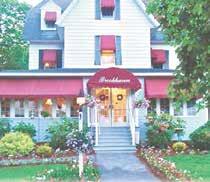



Encompass Health amputee patient quires the expertise of a diverse team of healthcare professionals. At Fairlawn, patients with amputations benefit from:
• Physicians: Regular visits from doctors specializing in rehabilitation medicine ensure that medical care is continuously aligned with therapeutic progress.
• Rehabilitation Nurses: Available 24/7, these nurses provide specialized care, manage medical needs, and offer education on wound care and prosthesis management.
• Therapists: Physical and occupational therapists collaborate to improve strength, flexibility, and functional abilities, focusing on both mobility and the skills required for daily activities.
• Prosthetists: Specially trained professionals assist in measuring, designing, and fitting prosthetic limbs, ensuring a comfortable and functional fit.
• Psychologists: Emotional support is crucial; psychologists help patients, and their families develop coping strategies and adjust to life after amputation.


For those recovering from a stroke, injury or illness, regaining your best quality of life begins with your ability to choose. Choose us for exceptional results.
By steve Messineo contriButing Writer
WORCESTER – Experiencing an amputation is a life-altering event, especially for individuals aged 50 and above. The journey to regain independence and adapt to new physical realities can be challenging. Fairlawn Rehabilitation Hospital, an Encompass Health hospital in Worcester, Massachusetts, offers a comprehensive Amputation Rehabilitation Program designed to support patients through every step of their recovery.
Fairlawn Rehabilitation Hospital has earned The Joint Commission’s Gold Seal of Approval® for Disease-Specific Care Certification in amputee rehabilitation, underscoring its commitment to high-quality patient care.
The hospital’s approach to amputation rehabilitation is rooted in personalized care plans tailored to each patient’s unique needs. Upon admission, a thorough evaluation is conducted to develop an individualized treatment strategy. This plan encompasses physical, occupational, and, if necessary, speech therapy, administered for three hours daily, five days a week. Such an intensive regimen aims to restore mobility, enhance daily living skills, and promote overall well-being.
Recovery from an amputation re-
“I would say that following an amputation our program focuses on helping the patient build strength and mobility to get ready for the prosthesis fitting process,” said Physical Therapist Jamie Cormier, one of the leaders of the amputation program at Fairlawn Rehabilitation Hospital. “We have a massive interdisciplinary team that looks at all aspects of care. Our therapy teams are making sure that the patient is able to move around, perform all their selfcare and activities of daily living.”
”One of the most important things we offer to our patients who have had an amputation is our connections with prosthetic companies in the community,” Cormier added. “Their representatives come to our facility to do initial consultations with the patients during their stay to lay out the process of obtaining a prosthetic for the future. We also offer peer visits with past patients who have had amputations to talk to our in-house amputees about what they’ve been through, which really helps with the grieving process of the loss of the limb and how to move forward. We also have neuro-psych physicians in house for our amputee patients to consult with while they’re here, again to help with that grieving process.”
Mai Ly, Nurse Educator at Fairlawn, added that, “We have a very holistic approach with our amputee Fairlawn | 11
By shAron oliver contriButing Writer
FALL RIVER – As strange as it may sound to anyone outside the southeastern region of Massachusetts or parts of Rhode Island, the chow mein sandwich is a delight to the palate of many. Created in the 1930s or 1940s, the sandwich is typically served on a bun with chow mein noodles and brown gravy made with onions, celery and bean sprouts, maybe with chicken, shrimp or beef or pork.
The sandwich is served “strained” or “unstrained” depending on preference of vegetables. It was made popular thanks to Frederick Wong, a Cantonese immigrant who got into the family restaurant business in Fall River in the 1920s, realizing New Englanders were particularly fond of gravies.
An instant hit Fall River was booming with factories and textile mills that employed a large number of immigrants at the time and Frederick Wong knew how to cater to the taste buds of those working in the area. The sandwich was an instant hit with immigrant workers
patients that goes just managing their amputated limb and helping them regain functional movement. We also have to consider their medical comorbidities to prevent further limb loss in the future,” said Ly. “For example, if they are diabetic patients, we need to understand how they are managing their insulin and if they are taking blood sugars measurements appropriately. We have glucometers and other resources we can provide our patients should they need monitoring at home to improve health awareness and prevent further limb loss,” she explained. “We also make sure the patient and/or their family members are able to manage the wound from the amputation before they are discharged home to prevent infection after they leave.”
Fairlawn’s collaborative approach to amputation management ensures that all aspects of a patient’s recovery are addressed comprehensively. Fairlawn’s collaborative approach also includes UMass Memorial Medical Center Vascular Surgery department’s Limb Preservation Committee.
The committee is led by Dr. Trista Brown, who stated that, “This committee is involved in developing postoperative guidelines for amputee management in the rehabilitation setting which include limb compression wrappings/garments, limb protection, devices, range of motion program, and

who had started arriving in Fall River in the late 1800s looking for work. Many of the Chinese immigrants came from the West Coast after working on the country’s Transcontinental Rail-
Vascular Surgery follow ups. There is direct communication between UMass physicians and Fairlawn Rehab Hospital physicians regarding any postoperative complications such as wound healing issues.”
Dr. Brown also added, “The amputee program developed between UMass and Fairlawn has created a continuum of care that promotes early functional return of the major limb amputee population. Moreover, there are major efforts with the administrative departments at Fairlawn and UMass Orthopedic/Vascular Surgery to minimize trips to the hospital by coordinating multi-specialty appointments,” she said. “This allows patients to see Vascular Surgery, Physiatry, and Prosthetics at their first post-op follow-up visit, in order to expedite the process for and reduce the time it takes for amputee patients to receive their prosthetic.”
Navigating life after an amputation presents numerous challenges, but with the right support and rehabilitation program, individuals can achieve significant milestones in their recovery. Fairlawn Rehabilitation Hospital’s Amputation Program offers a comprehensive, patient-centered approach that empowers individuals aged 50 and above to reclaim their independence and embrace life fully.
For more information, call 508471-9291 or visit https://encompasshealth.com/locations/fairlawnrehab.
mous menu in Brooklyn, New York as recently as 2013. It has been the subject of a Brown University anthropology dissertation, and one large Chinese restaurant sold nearly two million sandwiches during its 40 years in business. The dish was so popular that a band called Alika and the Happy Samoans wrote a tribute song about it in the 1970s.
JamesEdwardMulletty8828 commented on YouTube:
“This Should Be Fall River’s National Anthem!”
PiercedMikey explained:
“It has to be Fall River chow mein though, it’s a local recipe for the noodles.”
Barbara Wong arrived in Fall River shortly after World War II and five years later, she met Frederick’s son Albert, who took over the business from his father, and the two married in 1953.
Albert Wong ran the company until his death in the 1990s.
road and getting pushed out by hostility surrounding the federal Chinese Exclusion Act of 1882.
Wong opened the Oriental Chow Mein Company on Eighth Street in 1926. In the beginning, he only sold the noodles to local restaurants. However, right before the start of World War II, he began packaging the noodles along with a packet of gravy in bright yellow boxes under the Hoo-Mee brand name. In 1942, chow mein was added to the U. S. Army cookbook. The crunchy noodles also fulfilled the need for a cheap and filling meal for the cost of a nickel. A meatless version was sold for Catholics on Fridays as well.
Enduring popularity
Renowned chef Emeril Lagasse, who grew up in Fall River, has made no secret of his love for the sandwich. The chow mein sandwich was part of Fall River’s school lunch menu well into the 1990s and was on Nathan’s Fa-
Rising from the ashes In 2009, a fire destroyed the Eighth Street factory and Barbara was besieged by customers wanting to know if she would rebuild or if the noodles would be back. Wong received so many phone calls that she had to disconnect her phone. Restaurants even reported losing business because they were forced to purchase their chow mein noodles elsewhere. A few months later, the Oriental Chow Mein Company reopened for business.
In a 2019 interview discussing the 19th century immigration to Fall River and the universal language of foods, food historian Imogene Lim told WCAI reporter Sarah Mizes-Tan, “If you’re thinking, [European] immigrant groups, what do they know about Chinese food? But they know something called a sandwich. So, a sandwich becomes something accessible to them as a way to ease in that notion of Chinese cuisine.”



By shAron oliver contriButing Writer
ARLINGTON – After more than 50 years in business, owner Tom Furrier has made the decision to close up shop, and this is no ordinary shop. Cambridge Typewriter was a dinosaur of sorts. A non-digital, mechanical machine used for writing, like a typewriter, is foreign to much of the younger generation. Not so long ago, young women took typing classes in high school in hopes of landing a secretarial job post-graduation. But on March 31, Furrier will lock the door and turn off the lights for the last time and the myriad of typewriters from his shop will go silent.
Long before computers, laptops and tablets came on the scene, people depended on this ancient marvel for neatly typed documents. Even fictional author Jessica Fletcher of the TV se-

ries “Murder, She Wrote” was reluctant to trade in her trusty mechanical machine for a personal word processor. Alas, brands like Hewlett Packard and Dell came to replace Smith Corona, Royal Underwood and their ribbons for office use.
Last of its kind in the area
Furrier admitted that he was upset for his customers because there would be no place for them to go and his customers are not happy about Cambridge’s closing but are happy for him. For 45 years he lovingly repaired countless typewriters and sold them as well after buying the shop from its original owner.
He had held out for a year in hopes of someone buying and preserving his business but that never came to pass. He plans to sell as many of the hundreds of typewriters on hand as possi-





•
•
•
•
• Medication reminders
• Laundry & housekeeping services
• Safety checks






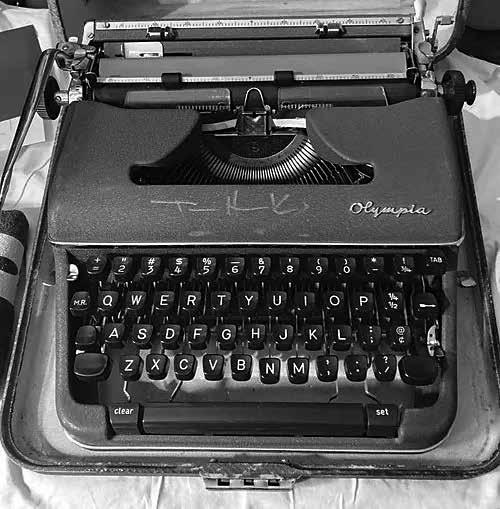
ble, telling Boston.com, “I’d rather do that than see them get thrown away. There’s a lot of nice, working machines in here.” He added, “(There’s been) an outcry … people love their typewriters. They love the shop, they love coming in. People are really going to miss this place.”
Cambridge Typewriter made headlines in 2023 when Academy Award-winning actor and typewriter enthusiast Tom Hanks sent an autographed 1960s Olympia SM4 typewriter which Furrier plans to keep for a while but will eventually donate it to a local charity to be auctioned off. Although Furrier had easily guessed the FedEx box contained a typewriter, the Santa Monica return label had him a bit perplexed.
As soon as he opened the top flaps, he noticed a golf bag towel with the Playtone (production company) logo on it and immediately realized Tom Hanks had sent it. The “Forrest Gump” actor also wrote a note which read, “I am presenting you with this typewriter … to do with as you please. On one hand you are taking it off my shelves and out in the greater world. On the other hand, you are giving me more space and less clutter. On the third hand you may be giving this miracle of a machine a fuller, newer life of use.”
Hanks had been collecting typewriters since he was 19 years old according to Business Insider, and has a
reputation for helping the typewriter community. And speaking of the typewriter community, there is a typewriter and voice percussion ensemble based in the Boston area called the Boston Typewriter Orchestra (BTO). The group uses several varieties of manual typewriters and performs at house parties, clubs, festivals and museums.
The city of Worcester played a key role in the invention of the typewriter. Although there is a list of persons who have invented their own versions of the machine, East Brookfield native and Worcester resident Charles Thurber is among them, having patented his invention, the chirographer or typographer, a machine for the blind, disabled and those nervous about writing by hand in 1843. It was never manufactured for commercial sale, but a surviving model is owned by the Worcester Historical Museum. In 1887, Scientific American magazine called Thurber’s machine “the first American typewriter.”
Cambridge Typewriter was founded in 1973. Tom Furrier began his career as an employee there and later bought the store from the original owner. It is where the 69-year-old Furrier hosted his annual typewriter parties and is one of the last of its kind in New England.
By MAriAnne lyons Delorey, Ph.D.
CNN reported last month that older women in Japan are occasionally getting themselves arrested in order to get into prisons as an alternative to aging in the community. While there are drawbacks, the benefits are tempting for someone with limited means: three meals a day, health care, including appropriate elder care, and social interaction. Prisoners are made to work if able, but most don’t mind that. They enjoy contributing again.
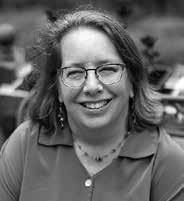
One sobering statistic was, “Across Japan, the number of prisoners aged 65 or older nearly quadrupled from 2003 to 2022 — and it’s changed the nature of incarceration. Due to the increasing age of prisoners, many of the jobs available to inmates were care jobs — helping bathe and toilet other prisoners.”
After reading this, I researched what American prisons looked like. The statistics are shocking similar.
NPR recently reported:
“In Oklahoma, the geriatric population has quadrupled in the past two decades. In Virginia, a quarter of the state’s prisoners will be geriatric by 2030. And in Texas, geriatric inmates are the fastest-growing demographic in the entire system.
“Prison systems across the U.S. have a constitutional obligation to provide adequate health care, and they’re racing to figure out how to care for the elderly in their custody — and how to pay for it.”
Having worked with lower income older adults for my entire career, I have observed that the population I serve can roughly be divided into two groups:
One group who was always poor and grew old and
One group that grew old and found that they were poor.
I wonder if the U.S. prison system sees something similar — a group of inmates who age while incarcerated and a group of inmates who grow old and find themselves getting in trouble.
In affordable housing, I found that the group who were poor and grew old often had a lifetime of hardship behind them. In addition to poverty, they sometimes had substance use, disabilities including mental illness, or other challenges that kept them from succeeding.
If my suspicion is correct, this group is akin to people who aged while incarcerated.
Our lawmakers should spend time now to broaden opportunities for younger folks to prevent this from worsening. Nonetheless, we have a graying prison population now. It is imperative that this situation be addressed so that prison does not look like a reasonable alternative for elders looking for care. Our prison system was not intended to supplement nursing homes. They are not physically designed well for that purpose.
U.S. prisons are going to need very different accommodations than they currently have. More people will not be able to use a top bunk. Cells will need to be walker and wheelchair accessible, and someone will have to help these seniors with their Instrumental Activities of Daily Living (IADLs) and Activities of Daily Living (ADLs). Additionally, corrections officers will need training in how to provide care for older people who cannot do for themselves. Not typically being thought of as caregivers, this role will stretch the imagination of a stressed system.
In short, we need to revamp what we do and how we do it.
In good news, in the US, older adults have the lowest rate of reincarceration when they are released. This contrasts to Japan, who has a high rate of reincarceration for older adults. It sounds like this is in part due to preference to stay in and the social stigma (and subsequent isolation) that comes from being incarcerated in Japan.
Developing a plan for our older adults does not stop at those who are in our communities. We need to think about our prison population and what release looks like in a world where they will need care.
Marianne Lyons Delorey, Ph.D. is the executive director of Colony Retirement Homes. She can be reached at 508-755-0444 or mdelorey@colonyretirement.com and www.colonyretirementhomes.com.
By JAnice linDsAy contriButing Writer
“Mocha mousse.” Sounds luscious.
But we’re not discussing dessert. We’re talking color, the Pantone color of the year for 2025. Mocha mousse is a soft, rich brown that, according to Pantone, “nurtures us with suggestions of the delectable qualities of chocolate and coffee, answering our desire for comfort.”


Each year, the year’s designated color appears in creative work by interior decorators, furniture designers, fashion designers, graphic designers, make-up inventors — people who create something for us to look at.
I assume it also appeals to stylish homeowners who enjoy re-painting their walls and buying new furniture and accessories to go with their new walls.
That’s not me. The new color is lovely, and I desire comfort as much as anybody. But I don’t want to paint my walls ever, because I like my friendly, unstylish beige walls, and I believe in the time-honored advice, “If it ain’t broke, don’t fix it.”
Nobody will ever accuse my home of being styl-
ish, unless there’s a style called “Middle-American Comfortable.”
A few years ago, I came across a concept that was new called “undecorating.” The design guru who wrote the book called it the “no-rules approach to interior design.” She said we should follow our instincts, do what we like, and that undecorating was about “soul and personality.” I approve of the no-rules approach, and think I have a hint of soul and some personality.
So, for example, here’s my dining room. Cream-colored textured wallpaper chosen by the house’s previous owner 27 years ago. Walnut table bought when my husband I were married in 1968, covered by a slightly worn, middle-aged red tablecloth. Comfortable chairs that don’t match the table. Walnut hutch holding a few dishes but mostly books. A spinet piano that matches nothing but sits in the dining room because that’s the only place it fits. On one wall, a colorful collage that our son made when he was in high school (he graduated in 1988). Built-in propane fireplace chosen by the previous owner; its black-marble-look framework and gold trim make it seem like a visitor to our planet who stumbled into the wrong neighborhood.
I achieved this mix-and-not-match splendor by doing as the guru said before she even said it, following the instincts of my soul and personality.
Once she said it, I was stylishly undecorated for a while, but undecorating is no longer in, and neither am I.
A downside of my “follow your soul and personality” approach is that my soul and personality tend to collect things. And I want those things where I can see them. And those things get dusty. And I hate to dust. I do not know why. A friend once said to me, when we were both newly married: “Big deal, you dust and vacuum, six months later you have to do it all over again.” It does seem a bit futile.
My collection of ceramic and glass birds inhabits a bedroom. Elephants in the kitchen. Owls in the living room. Ukuleles and angels in the dining room. Buttons next to the TV. Earrings that I no longer wear, displayed on a 10-inch square screen in a picture frame on the kitchen wall.
I do make an attempt to bring like colors together. One room is vaguely blue, one vaguely red. Furniture is inviting and of various vintages, the newest being a pair of twenty-year-old easy chairs.
All this bring comfort and enjoyment to my unstylish soul and personality.
I’m glad that nobody would ask to photograph my house for a stylish beautiful-home magazine. I hope nobody would want photos for a Middle-American Comfort magazine. If they did, I would be forced to dust.
Contact jlindsay@tidewater.net.


By sAnDi BArrett contriButing Writer
REGION – More than a wonderful spot to ski in winter, Wachusett Mountain State Reservation has lots to offer year round. Springtime is on the horizon and it is time we peel back our winter layers, breathe the crisp vernal air, and revel in the longer days.
Mother Nature’s outdoor playground awaits — it is time to explore her annual awakening.
Wachusett Mountain Ski Area
As the warmer weather melts our packed powder or frozen granular snow depending on the day, Wachusett Mountain Ski Area finishes out the season with a bang. They typically call the ski season finished around the second weekend in April, which gives snow bunnies lots of spring downhill opportunities. Spring is a lovely time to hit the slopes. You can wear less gear, the sun provides copious amounts of vitamin D while you exercise, and the days are longer so you can ski longer.
Crazy ski celebrations like the annual Pond Skimming mark the end of


the winter season. The crew carves out a large pond at the end of a ski run and fun-loving costumed skiers and boarders attempt to cross the water on their sticks. It’s like sailing across a giant slushy propelled
Colony Retirement Home III is congregate housing for seniors. Enjoy nutritious “Home Cooked Meals,” served in our attractive dining room with your neighbors and friends.

only by your momentum from racing down the snow. Even non-skiers will get a deep belly laugh watching the snow-to-water antics. (visit https:// www.wachusett.com/events/for dates and times).

All apartments at Colony Retirement Homes receive rental assistance through the HUD section 8 program. Rent is 30% of your
Call Monday thru Friday, 9am to 5 pm for more
Wachusett Mountain Access Road
Beginning around Memorial Day, you can drive to the summit of Mount Wachusett. Enter through the DCR entrance — open 9:00 a.m. to sunset — it’s a half-mile from the ski area entrance.
Driving up the mountain road is prohibited when the ski trails are open. There is a nominal fee for vehicle access, but the views at the 2,006foot peak are well worth the donation.
When the sky is clear, from the summit you can look east and see Boston, north and view Mount Monadnock, and west to peek at Mount Greylock.
Spring hiking is a wonderful way to shake off cabin fever. While it does tend to be muddy and potentially icy going on the trails, well prepared trekkers will reap the benefits of working their winter frozen muscles.
Wachusett Mountain State Reservation offers hikers 17 miles of groomed trails. Meander through forested paths, stride across meadWachusett | 20



By Kristen reMillArD contriButing Writer
GRAFTON – Long-time Grafton resident Lori Houlden-Girard recognized a need in her community and wanted to help. It inspired her to create a nonprofit organization called Meals that Matter.
Houlden-Girard was having her own challenges, juggling her daily home life and 30-year career in furniture repair and upholstery while also caring for her elderly father. She realized that food insecurity alone was only a piece of the challenges faced.
Shaping the program
Her vision started over a year ago, in October 2023 and after a year of trial and error, she was able to shape the program into how she believed it would best serve people in the community. It was first imagined as a large dinner for people to attend but would become a service with a more personal approach to individuals.
Houlden-Girard listened to many people’s ideas over the year, but quickly realized that the dinner originally planned was a less personal approach. She learned that people

preferred their privacy when it came to asking for help. She decided to go back to the basics and began serving
people on an individual basis. Today, Houlden-Girard rolls up her sleeves every Sunday and serves about 14 families two nutritious home-cooked meals and a soup every week. She not only cooks for all of these people, but she also delivers the meals and checks in with every individual to make sure they have everything they need.
Family legacy in farming
If you are from the Grafton area, you may recognize the name “Houlden” from the popular local farm of the same name at 95 Wesson Street in Grafton. Houlden-Girard comes from many generations of providers to the community through farming, so it’s no wonder serving the community delicious meals comes so naturally. Her desire to nurture through food began with her grandmother Dorothy who also ran a farm in Westborough.
Her mother, Ruth Houlden, speaks highly of growing up on the family farm. The days were spent farming and making deliveries of fresh milk, eggs and meats to the community members of Westborough. Houlden recalled the excitement people would have when they received their fresh milk and cream from the farm. People, she said, would argue over who got that thick layer off the top of their farm-fresh milk to use in their morning cup of coffee.
After Ruth married, she and her husband built their home on the Houlden property in Grafton and raised their family there. Their children (Lori included) recognized their mother’s amazing ability to grow produce and sell it on a tarp on the front lawn. That was the start of Houlden Farm.
Houlden-Girard also shared memories of the care her grandmother Dorothy put into cooking the family fresh homecooked meals. She believes







Meals That Matter serves about 14 families two nutritious homecooked meals and a soup every week.
to help and has contributed her time by helping Houlden-Girard with social media and created the organization’s website.
“I forget how I was roped into Meals that Matter, but it has been life altering for me to help our friends and neighbors,” said Hume. “Lori is a giver with a wide-open and generous heart. She saw a need in the community, so she began providing home cooked, nutritious meals paired with home delivery and a quick check on the recipient’s well-being. The rela-
tionships she creates with individuals makes the recipient feel like someone is looking out for them and they are not alone.”
Programs like Meals On Wheels are a great resource for many folks, but they are mainly geared towards seniors or homebound adults and typically require an application. Meals That Matter is a program that anyone can call on, with no questions asked. For more information or to make a donation, visit https://mealsthatmatter. net.



Lori is a giver with a wide-open and generous heart. She saw a need in the community, so she began providing
home cooked, nutritious meals.
Lee Sweeney Hume
her family had the type of compassion about food that others could feel, which is a gift that was handed down to her.
Community impact
Grafton senior and former librarian of the Nelson Library June Lufkin posted about Meals that Matter on her Facebook account:
“I am the lucky recipient of meals prepared by Lori Houlden-Girard,” she wrote appreciatively. “The food is delicious and she’s a wonderful cook. I am so grateful.”
Recipients of Meals that Matter are not limited to the senior community. Houlden-Girard has assisted people young and old, such as a parent battling cancer who is juggling treatment, healing and children. She also served a pregnant woman who was still working full time and those who found themselves at the side of their declining parents. The program is about helping with no questions asked and with no judgement passed. No matter your financial situation, no matter your personal situation, if you need help, Meals that Matter will be there for you.
Houlden-Girard has been able to accomplish a lot over the last year, but not without help. She has served seniors for years in Grafton, which keeps her well connected to the senior citizen community. Lisa Kelley, who
works at the Grafton Senior Center, has connected her with individuals who could benefit from her services, which has helped get the word out about the program.
“For as long as I’ve known Lori, her passion has been to enhance the lives of elders through nutritious home cooked meals,” said Kelley.
“Through my job at the Senior Center, I have been able to provide Lori with the names of willing seniors who are in a position to receive her wonderful meals.”
Support from others
“Homefield Credit Union’s President Karl Moisan generously donates $2,500 annually towards a holiday meal for the seniors of Grafton,” Kelley explained. “This year, I wanted to share $500 of that donation with Lori for Meals that Matter since her program has had a direct and positive impact for the seniors in town. Since Karl and Homefield Credit Union are so generous, they gave the full $2,500 to the senior center plus $500 to Meals that Matter,” she added. “Lori is an invaluable asset to Grafton and I’m proud to have her as a friend.”
As more and more become familiar with Houlden-Girard and her mission, people in the community have helped get the word out about this new and growing program. Lee Sweeney Hume of Grafton was very excited



By shAron oliver contriButing Writer
SOMERVILLE – Somerville native and gangster turned actor Alex Rocco had lived a life one could easily surmise that it could only come straight from a novel. The late actor is best known for his role as Moe Greene in the 1972 gangster film “The Godfather,” but prior to playing a villain in film, Rocco had a real-life affiliation with the notorious Winter Hill Gang.
Gang war
Rocco was born as Alessandro Federico Petricone Jr., in Cambridge in 1936 and raised in nearby Somerville. In the 1960s, there was a war between the McLaughlin Brothers Gang of Charlestown and the Winter Hill Gang. The McLaughlin gang had built a fearsome reputation and were responsible for carrying out contract killings on mobsters all over the region including the Patriarca crime family and the Winter Hill Gang.
Following an incident which occurred at a Salisbury Beach cottage during a 1961 Labor Day party, accounts get a little murky and vary. Either Rocco (then known as Bobo) or McLean gang associate Bill Hickey had allegedly beaten George McLaughlin senseless for supposedly groping either Rocco’s girlfriend or Hickey’s wife. The pair loaded Mc-

Laughlin, who was a member of The McLaughlin Brothers Gang, inside a car to dispose of his body.
After realizing McLaughlin was
not dead, they dumped him on the Anna Jaques Hospital lawn. After Bernard “Bernie” McLaughin, leader of the gang, learned of the incident, he
demanded James “Buddy” McLean (leader of the Winter Hill Gang) turn over Rocco and Nicholson. McLean refused.
An enraged McLaughlin had his men try to wire-bomb the McLean family car that same night. Awoken by the sound of dogs barking, McLean went outside and surprised them by firing shots. The men fled. Infuriated, McLean along with Rocco and off-duty cop Russell Nicholson immediately searched for Bernie. McLean allegedly shot and killed McLaughlin coming out of the Morning Glory Café on October 31, 1961. Although there were around 100 witnesses, no one stepped forth with information because of their agreement not to violate the neighborhood code of silence.
The three men were arrested but a witness who picked them out later recanted and they were released. In 1962, the McLaughlin gang bombed Rocco’s wife’s car. Fortunately, she was not in it but soon divorced him. Still bent on retaliation, George and his brother Edward “Punchy” McLaughlin eventually murdered Russell Nicholson in 1964.
Turning over a new leaf
Alex Rocco decided to turn over a new leaf and leave town. He supposedly flipped a coin — heads Mi-
Bigelow Village – Rutland
Melrose
Brookhaven Assisted Care – West Brookfield
Heywood Wakefield Commons – Gardner SUBSIDIZED HOUSING
Colony Retirement – Worcester Green Hill Towers – Worcester
Sherwood Village – Natick




Alex Rocco decided to turn over a new leaf and leave town. He supposedly flipped a coin — heads Miami, tails California. The Golden State won. He moved to Hollywood, changed his name and took acting lessons from fellow Bostonian Leonard Nimoy, who helped him get rid of his Boston accent.
ami, tails California. The Golden State won. He moved to Hollywood, changed his name and took acting lessons from fellow Bostonian Leonard Nimoy, who helped him get rid of his Boston accent.
Rocco auditioned for and won the iconic role of Moe Greene in “The Godfather,” a character and personality loosely based on mobster Bugsy Siegel. The phrase “Moe Greene special” was coined in reference to his execution by being shot through the eye and has subsequently been referenced in other gangster shows like “The Sopranos,” in the episode “Meadowlands.”
Rocco also starred in the 1973
neo-noir crime film “The Friends of Eddie Coyle,” as bank robber Jimmy Scalise. Filming took place throughout the Boston area, including Cambridge, Dedham, Malden, Milton, Quincy, Sharon, Somerville and Weymouth. He won a Prime Time Emmy in 1990 for his role in “The Famous Teddy Z” and did a significant amount of voice-over work later in his career which included “The Simpsons” as Roger Meyers, Jr, the head of Itchy and Scratchy Studios, and “Family Guy.”
Alex Rocco died in his Studio City, California home from pancreatic cancer on July 18, 2015, at the age of 79.






services? Contact us today to see how we can help! info@trustedlikefamilyhomecare.com • 508-579-1890 www.trustedlikefamilyhomecare.com and disabled adults in Worcester County Locally owned and managed – fully insured and bonded • Client satisfaction and service are









ows and fields, stroll along ponds and lakes as you explore the 35 trails that crisscross the area. Make your way to the Wachusett Mountain Summit and Observation tower with several trails leading to the top.
The Mount Wachusett via the Balance Rock, Old Indian, and Semuhenna trails is a popular 3.8-mile route that takes you through various landscapes including the summit access road. Rated as moderate by AllTrails, this route does have a few challenging spots.
The Wachusett Mountain Loop hits the highlights including Echo Lake, Balance Rock, and the Wachusett Mountain summit. Considered a moderate trail, the 6-mile loop will give you a great workout.
If you plan to hike Wachusett Mountain in the spring, observe standard hiking safety guidelines. In addition to water and snacks, pack insect repellent, sunscreen, and consider trekking poles as the trails are often rocky and riddled with tree roots.
Exploring Wachusett Mountain’s plants

The Balance Rock on the trail of the same name is one of the interesting sights while hiking on Wachusett Mountain. (Photos/Sandi Barrett)

ning Primrose, Trout Lily, and Tall Meadow Rue are just a few of the wildflowers you can find.
Additionally, Wachusett’s Green Giants download (https://www. mass.gov/doc/wachusetts-green-giants-tree-identification-brochure/ download) on the state website lists ten easily spotted tree species on the Reservation. Cool Shagbark Hickory, sturdy Northern Red Oak, and quirky Pitch Pine trees line the trails and provide cover for the forest creatures.
Nestled near Wachusett Mountain Mass Audubon’s Wachusett Meadow Wildlife Sanctuary offers 12 miles of trails and pathways to explore.
•
There are two wonderful programs that encourage visitors to explore Wachusett Mountain’s natural gems. Exploring the local plants while you get outdoors gives purpose and meaning to your hikes.
• Tendonitis
• Fractures
• Fungus
• Bunions/Corns
The Wachusett Wildflowers list
• Calluses/Warts
•
• Gout
• Structural/

&
(https://www.mass.gov/doc/wachusett-wildflowers/download), curated by the Massachusetts Department of Conservation and Recreation, describes the beautiful flowers you will find while you explore the area. Eve-
Manageable hikes like the 0.2mile Otter Pond Trail or the half-mile South Meadow Trail are perfect for a quiet stroll. For the more adventurous hikers, the 1.8-mile Chapman Trail can be moderately challenging and connects with trails leading to Wachusett Mountain summit.
Spring programs offered by Mass Audubon at Wachusett Meadow include Yoga on the Trails, Woodcock Walk, Nighttime Noises, and more.


